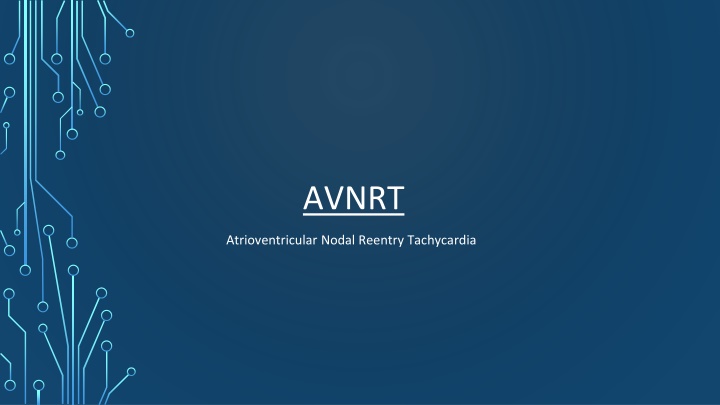
AVNRT: Atrioventricular Nodal Reentry Tachycardia Explanation
Learn about AVNRT, a type of tachycardia involving the atrioventricular node reentry circuit. Explore EKG findings, AH jumps, echo beats, patient characteristics, conduction pathways, and ablation procedures in detail with relevant images.
Download Presentation

Please find below an Image/Link to download the presentation.
The content on the website is provided AS IS for your information and personal use only. It may not be sold, licensed, or shared on other websites without obtaining consent from the author. If you encounter any issues during the download, it is possible that the publisher has removed the file from their server.
You are allowed to download the files provided on this website for personal or commercial use, subject to the condition that they are used lawfully. All files are the property of their respective owners.
The content on the website is provided AS IS for your information and personal use only. It may not be sold, licensed, or shared on other websites without obtaining consent from the author.
E N D
Presentation Transcript
AVNRT Atrioventricular Nodal Reentry Tachycardia
PATIENT IN AVNRT: EKG Micro reentry circuit Paroxysmal Must have a slow and a fast pathway EKG - P Wave closely coupled after QRS (or inside QRS) because the circuit is going down the slow pathway and up the fast pathway
AH JUMP Decremental conduction Indication of slow pathway 50+ ms prolongation in AH with 10 ms shortening of S2
ECHO BEATS AV Nodal Echo one journey of re-entrance Pulsing the HRA (Programmed Stimulation) AVNRT is usually characterized by several of these beats
PATIENT IN AVNRT: EMG Characterized by several echo beats This patient will be diagnosed with AVNRT.
AVNRT CONDUTION Down the slow pathway, up the fast pathway Slow pathway - fast refractory Fast pathway - slow refractory
ABLATION Target: slow pathway Small and sensitive area Burning inferior and posterior to the AV node; very close to the His Stop ablation if an A signal is seen without a V sign of heart block Successful when there is no tachycardia induction No echo beats, no AH jump Wenckebach cycle length longer
